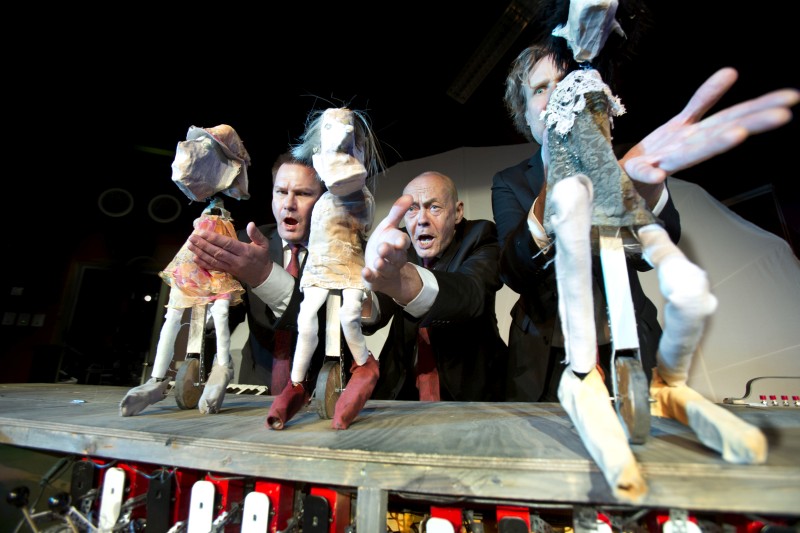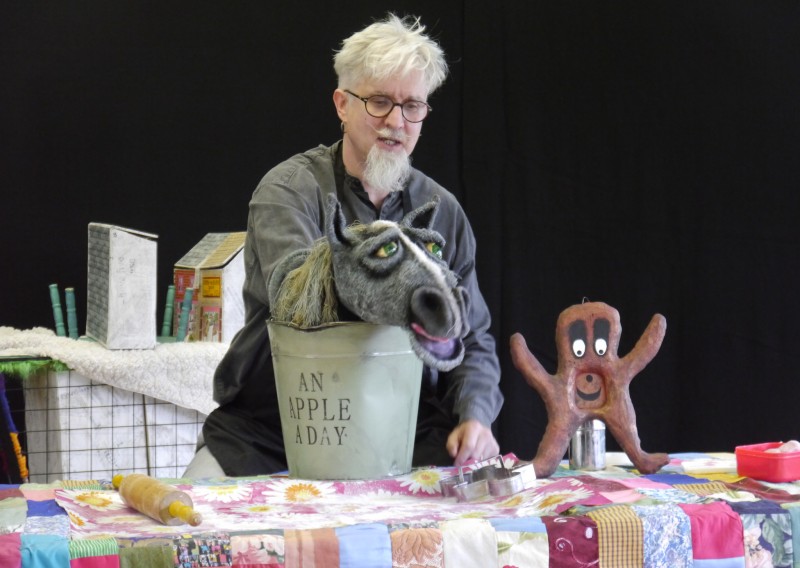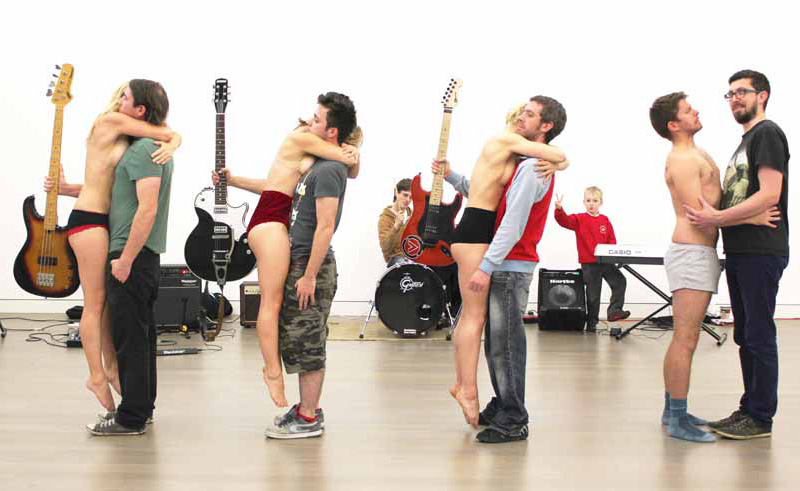 This show is rough but glorious puppetry and superb musicianship in a version of the classic Faust that is wonderfully easy to follow. Three men greet us and display proudly the playboard for the puppetry that is also a magnificently roughly hand-made musical instrument. The men are all excellent musicians and singers, which they make clear from the start by performing a musical overture.
This show is rough but glorious puppetry and superb musicianship in a version of the classic Faust that is wonderfully easy to follow. Three men greet us and display proudly the playboard for the puppetry that is also a magnificently roughly hand-made musical instrument. The men are all excellent musicians and singers, which they make clear from the start by performing a musical overture.
Singing in harmony and for the most part speaking in wonderfully simple and clear English (this is a Scandinavian company which made a huge opera of Faust, and created The Story of Faust as a companion piece for younger audiences), they use roughly-made puppets, simple automata and scraps of foam and fabric fur to tell the story of the scientist/scholar/researcher Faust and the wolf-like demon from Hell Mephistopheles – or Mephisto to his friends.
There are plenty of charming moments in this piece. The cool Mephisto, who is like a public servant from Hell, the talking heads on separate stands on either side of the playboard, the rough mechanical scene changes. The moral message is abundantly clear as well: Faust can have whatever he wants for the 24 years of ultimate power – as long as it’s sinful. Becoming royalty can’t happen as this is a God given thing. Marriage is out of the question as it is a union consecrated in Heaven. When the time is up Faust tries to repent but it is too late – he’s in the clutches of the Devil.
These three performers, while highly accomplished with their musical instruments, are less skilled and practiced with their puppets. The rough designs and fabrication of the puppets and set would make it hard for skilled puppeteers to get much out of them, and the places where this performance works best is in the music, singing, and witty wordplay. If more time, effort, and money were invested in skilled designers and puppet makers, this would be a little gem of a show. Yet despite its restrictions in this regard, it’s still a very good show for family audiences and makes the story of Faust both easy to understand and highly entertaining.




